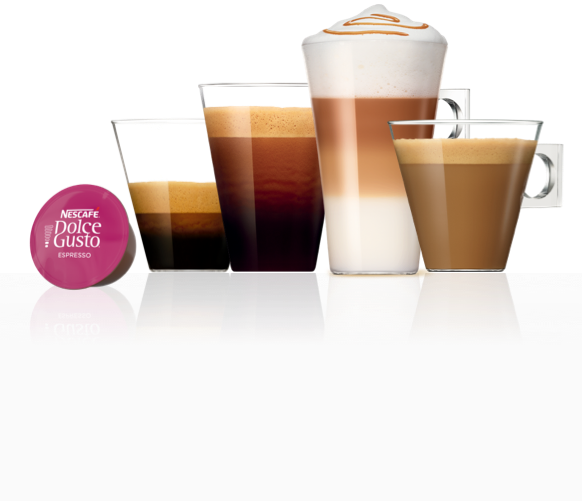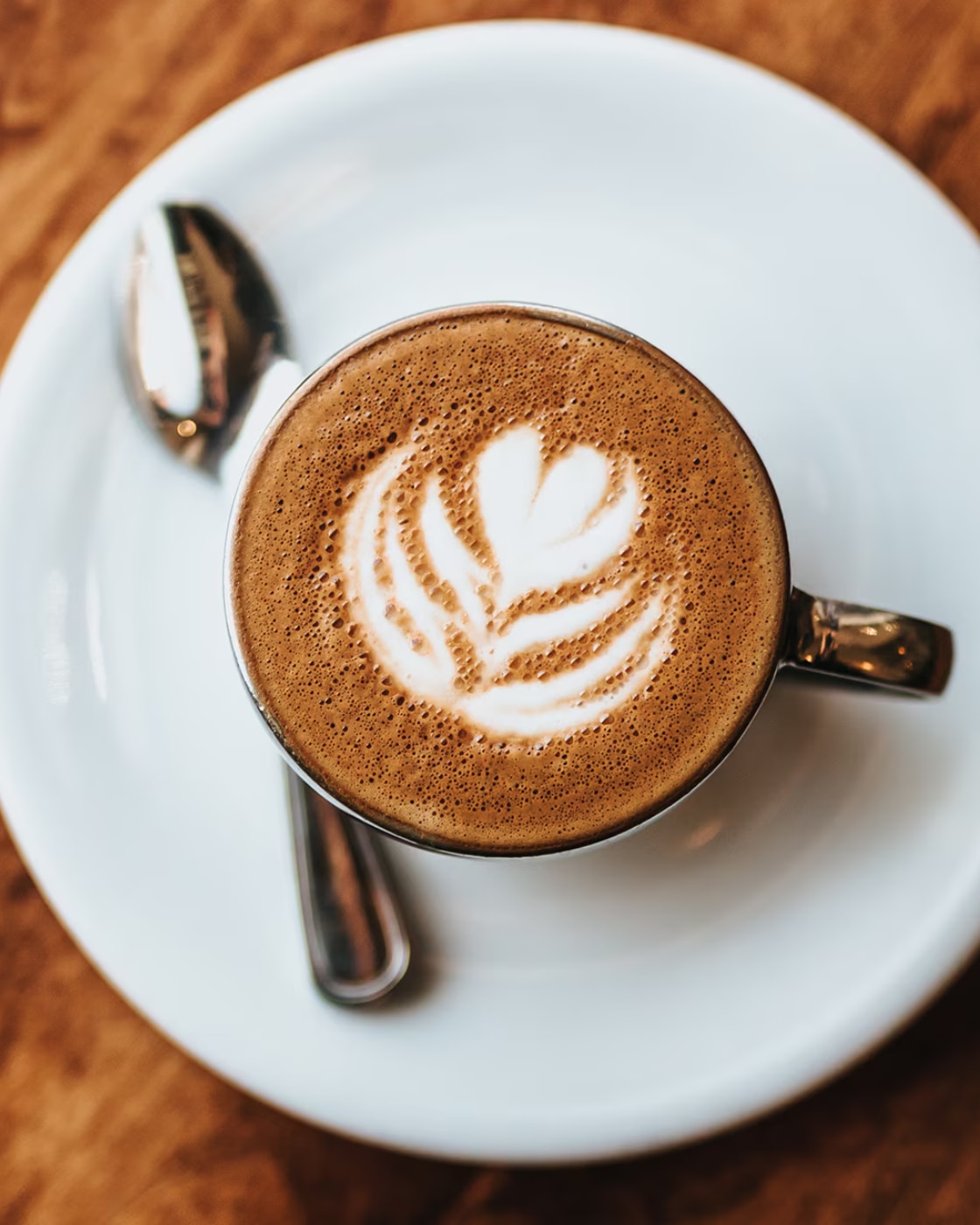First of all, what is coffee roasting?
Coffee roasting is a crucial process that transforms raw, green coffee beans into the flavourful, aromatic beans we use to brew our daily cups of coffee. By applying heat to the beans, the roasting process develops their flavours and aromas. The degree to which the beans are roasted determines their final flavour profile, from light and bright to dark and bold.
Coffee roast levels explained
Coffee beans are categorised into different roast levels based on the extent of roasting they undergo. Let’s explore the different roasts:
What is a light roast?
Light roasts are distinct from other roasts due to their shorter roasting time and lighter colour. Unlike medium and dark roasts, which undergo a longer roasting process to develop richer, caramelised flavours, light roasts preserve the bean's natural characteristics, resulting in a brighter, more acidic cup of coffee. Visually, light roast coffee beans lack the oily sheen found on darker roasts, appearing dry with a light brown hue.
How is light roast different to other roasts?
Light roasts are distinct from other roasts due to their shorter roasting time and lighter colour. Unlike medium and dark roasts, which undergo a longer roasting process to develop richer, caramelised flavours, light roasts preserve the bean's natural characteristics, resulting in a brighter, more acidic cup of coffee. Visually, light roast beans lack the oily sheen found on darker roasts, appearing dry with a light brown hue.
How is light roast coffee made?
Light roast coffee is made by carefully roasting green coffee beans for the shortest amount of time, compared to other roast levels. The beans are heated in a rotating drum until they reach an internal temperature of around 180-205°C just before the "first crack," which signifies the initial release of moisture and expansion of the beans.
What does the light roast taste like?
Light roast coffee offers a vibrant and complex flavour profile, often described as bright, acidic, and nuanced. The higher acidity creates a crisp, clean finish, while the lack of caramelisation from prolonged roasting avoids the bitter or smoky flavours found in darker roasts. The overall taste experience is lighter and more delicate, allowing the inherent characteristics of the coffee bean to shine through. If you want to try a light roasted coffee, try our
NESCAFÉ® Dolce Gusto® Espresso Coffee Pods.
What is blonde roast?
A blonde roast is simply a different technique for roasting coffee beans to get a lighter, milder-tasting coffee with a sweeter taste profile. In appearance, a blonde roast will look lighter than a regular coffee bean. They also require less roast time, so you can achieve that mild taste quicker.
How is blonde different to other roasts?
Compared to darker coffee roast levels, blonde roast requires a lower temperature and a quicker roast time. It’s similar to other light-roast coffee beans! Again, the colour of the bean is often lighter than other coffee beans. Compared to darker beans that have more time to roast, the shorter roast time of a blonde bean brings out the acidity more than other coffee roast levels do.
How is blonde roast made?
To create a blonde roast, the temperatures needed are between 179°C and 204°C. When roasting coffee, cracking sounds are a sign the coffee is roasting. To get a blonde roast, your beans should be ready around the first crack you will hear when roasting, but don’t let it get too far past it as it will become a darker roast. The longer beans are left the darker the roast will be. A blonde roast will often look lighter and when poured will have a thinner texture than a darker roast.
What does blonde roast taste like?
Blonde roast coffee has a sweeter, milder taste and often has mellow notes to complement its acidity. A full body means the texture may feel thicker and creamier on the tongue. So, if you find certain coffees to be too heavy, try a blonde roast for a thinner and less textured drink. A blonde roast is excellent in an
Americano for that lighter texture but also suits a latte for a smoother texture.
What is a medium roast?
Medium roast is when the coffee bean has had a longer roast and develops different flavours than the blonde roast. This is probably the coffee roast you’ll be most familiar with when ordering a coffee. This is because it has a luscious balance of richer flavours and more body, without as strong of a flavour as a dark roast.
How is medium roast different to other roasts?
Depending on where the bean is grown, most medium roasts will have less acidity than other coffee roast levels. It’s able to be a little thinner or thicker depending on the
bean's origin and a variety of flavours. Compared to other roasts, a medium one is darker in colour and has less of an oil sheen to it.
How is medium roast made?
Medium roast coffee is reached usually after the first crack and reaches temperatures between 204°C-221°C. You can roast it for slightly longer and see what different flavours may develop!
What does medium roast taste like?
There are a lot of different flavours to experience from a medium roast coffee. Its acidity and body can also range so there are different options depending on your preference. A medium roast can often have nutty and chocolatey flavours, which gives it sweetness and a rich taste. The body is often quite smooth but can vary and become creamy or syrupy depending on the bean. Because of that extensive variety, this suits all types of coffee styles, from Americano to
cappuccino.
If you like the sound of a medium roast, check out our
NESCAFÉ® Dolce Gusto® Café au Lait Intenso which has a bold and creamy flavour profile.
What is a medium-dark roast?
A medium-dark roast coffee takes the bean a step beyond medium, venturing into richer, more intense territory. While some of the origin characteristics remain, they are less pronounced than in lighter roasts, giving way to the bolder flavours created by the roasting process itself.
How is a medium-dark roast different to other roasts?
Compared to lighter roasts, medium-dark roasts have reduced acidity, fuller body, and darker colour, with the beginnings of an oily sheen. The flavours shift from bright and fruity to richer notes of bittersweet chocolate, nuts, and spices. While darker roasts emphasise roasted flavours and often have a bitter edge, medium-dark roasts retain some of the bean's origin characteristics, offering a more nuanced cup. This balance makes them a popular choice for those who enjoy a bolder flavour without the intensity of a full dark roast.
How is a medium-dark roast made?
Medium-dark roasts are made by roasting beans beyond the first crack and well into the second crack. This extended roasting time, typically reaching an internal temperature of around 225-230°C, allows the beans to develop a deep, chocolate brown colour and begin to release their oils. Careful control is crucial in achieving the rich, complex flavours characteristic of a medium-dark roast without becoming overly bitter or ashy.
What does a medium-dark roast taste like?
Medium-dark roasts offer a rich and robust flavour profile, balancing the brightness of lighter roasts with the intensity of darker ones. Expect bittersweet chocolate and nutty flavours to dominate, often accompanied by hints of caramel, spice, or even a subtle smokiness. The acidity is lower than lighter roasts, resulting in a smoother, fuller body. The overall taste is balanced and complex, offering a satisfying depth without the bitterness often associated with darker roasts. If you like the sound of a medium dark roast, check out our
NESCAFÉ® Dolce Gusto® Lungo Coffee Podss which offer a bold and creamy flavour profile.
What is dark roast?
As its name suggests, this is the darkest roast you can get for your coffee bean. The dark roast will evolve your bean into a deeper taste after a longer roast time than any other bean we’ve mentioned so far. If you love a strong cup of coffee, a dark roast is the ideal choice for you, as it often has a smokier taste.
How is dark roast different to other coffee roasts?
In colour, a dark roast has a very dark brown bean with an oily surface. It may have more bitterness due to the long roasting time, but it has less acidity than a lighter roast and often has smoky and caramel flavours. Dark roast is also amazing as an
espresso, giving you a good kick.
How is dark roast made?
For a dark roast, the beans are roasted longer between the temperatures of 221°C and 226°C. It will usually take two cracks for a dark roast to be ready.
What does dark roast taste like?
Dark roast has many, nutty, maple and chocolate flavours, which helps create that strong taste you may like from your coffee. Dark roast also has a deeper body that adds a lovely rich texture. If you’re not a fan of bolder flavours, a dark roast might be quite strong, but you can always try it with more milk or cream to sweeten it. The good thing about this roast is that it blends well in lattes, cappuccinos and more.
For a good start to your day, try our
NESCAFÉ® Dolce Gusto® Espresso Dark Roast by Starbucks® for rich caramel flavours.
What is a very dark roast?
A very dark roast coffee represents the furthest extreme of the roasting spectrum. Very dark roasts have a thin body due to the breakdown of the bean's structure and offer a powerful, intense flavour experience.
How is very dark roast different to other coffee roasts?
Very dark roasts stand apart from other roasts due to their extreme roast level. Compared to lighter and even medium-dark roasts, they have an almost entirely different flavour profile, lacking the brightness, acidity, and origin characteristics of less roasted beans. Their colour is a deep, almost black, with a significant amount of oil on the surface. This dramatic shift in flavour, colour, and body distinguishes very dark roasts from others.
How is very dark roast made?
Very dark roasts are created roasting the coffee beans at an internal temperature above 240°C. This prolonged exposure to heat causes the beans to become nearly black and extremely oily. This process is crucial in achieving the characteristic flavours of a very dark roast.
What does very dark roast taste like?
Expect dominant flavours of smoky char, burnt caramel, and often a pronounced bitterness. The original flavours of the coffee bean are almost entirely obscured by the roasting process, resulting in a uniform taste profile regardless of origin. The overall taste is powerful and often described as burnt, smoky, or even ashy, appealing to those who prefer a strong, dark coffee flavour.
Is there more caffeine in different roasts?
There’s a lot of discussion about whether different roasts have different levels of caffeine. This is because the different temperatures of each roast can affect their density and how much caffeine they retain. A blonde roast may be a denser bean, containing slightly more caffeine than a dark roast. Overall, though, there is no distinct difference in the caffeine amount from blonde to dark roasts.
There is also often a mix-up between the flavour of coffee and the amount of caffeine. Bitter or richer-tasting coffee does not necessarily mean more or less caffeine. Just like making your regular coffee, the amount of caffeine depends on how many shots of coffee you choose to have. If you prefer less caffeine, your best option is to go
decaf or perhaps only use half a shot in your next coffee.





































































































